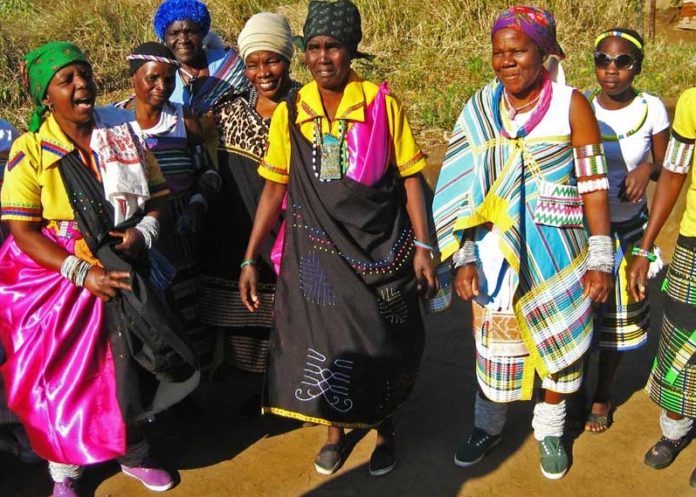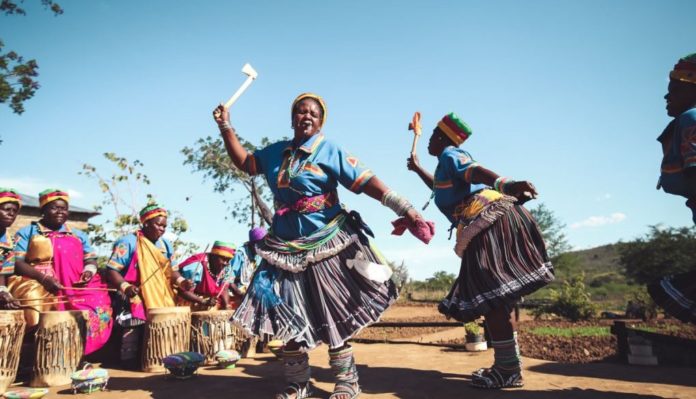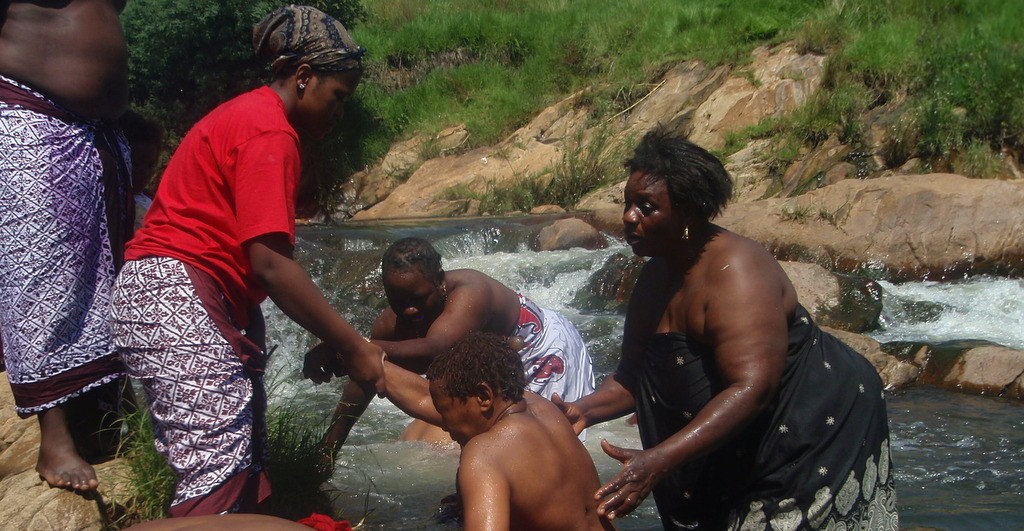The Tsonga tribe inhabits the Southern Mozambique coastal plain, parts of Zimbabwe and Swaziland, as well as the Limpopo and Mpumalanga Province of South Africa.
The ethnic group laid its foundation far back in history and had flourished after that. They have lived their serene insular lives in coordination with nature long before the widespread warfare and chaos that characterized the early 1800s, during which the nations of southern Africa spread out to new regions to escape the growing Zulu might.
During the Apartheid era, the Shangaan and Tsonga people were concentrated in the ‘homeland’ of Gazankulu, to the west of the Kruger National Park. Since the first democratic elections in 1994 however, Gazankulu has been integrated into the Limpopo province. And their population has boomed over the years.
Their present count is around 4.6 million as per the records which were prepared in the year 2000.
Tsonga People
The Tsongas is a mixture of diverse populations, including the Shangaan, Tongas, Thongas and several other less significant ethnic groups. Sometimes it also includes the local Tswa and Ronga people of Mozambique. These smaller groups are quite distinct from each other in their languages and cultures but overall, they are considered to be in a single group of the Tsongas.
See Also: Venda People, Culture and Language
They are traditionally farmers. Their economy is centred on pastoralism and mixed agriculture. Cassava is the main crop being cultivated there.
In their culture, a village normally comprises of a few houses surrounded by agricultural lands and grazing pastures. The ritual of polygamy is prevalent there and with many wives and much more children, it is quite possible that an entire village comprises of only one family started by only one male member.
Culture

For their circumcision, the Tsonga people normally go to the initiation school and after this, they are regarded as men. There are other rituals considered in the Tsonga culture as well.
One of the most well-known is the face carving ritual. It once started as a type of punishment ushered by the slave traders on them but now it has become an element of beauty.
The dresses and the ornaments worn by them also magnify their beauty. The decorations and the colours used by them in making such carvings, as well as ornaments, clearly depict the rich culture and heritage of the Tsonga populace.
The Tsonga people, especially those living around the South African Limpopo river are well-known for the different low-technology, electronic dance music that they practice.
One of the major aspects of the Tsonga culture is story-telling. This is mainly done by the most elderly woman living in the village, whose job is to tell the stories of great heroics of fascinating people of the past thus keeping their history alive in the heart of the people.
Read Also: Ndebele Culture, Pattern & Attire
A part of the Tsonga population has transformed to Christian while the remaining still follow the old pagan religious beliefs and go by the strict rites of the old Tsonga culture.
This mainly includes pleasing the ancestral spirits, and in cases where there are some diseases of either individuals or crops that they cultivate, it is considered as a breach of some of these rites and as a result, they have to face the wrath of the spirits.
Traditional Attire

Truth is, the Ixtsonga traditional wear has revolutionized – from color to prints, design, and style. The Tsonga people are known for the bright color attires.
Some of their popular print include the xitsonga ixibelani, Motjeka, miceka. Women mostly don these attires with bangles.
Their full attire is made up of the doek (duku), the Neckpiece (vuhlalu; usually more than one), the shirt (yele), the stomach belt (nkhamu), the Queens (ti queeni), Miceka, and Xibelani.
Tsonga Language
The native language of the Tsongas is the Tsonga language. It is mutually intelligible with Tswa (a group of people who are part of a larger Nguni ethnic cluster called the Tsonga (Vatsonga), and Ronga (a sub-group of the Tsonga cluster).
Music
The Tsonga people play a variety of different local instruments; most of them belong to the category of wind, strings, and percussions.
Their drums look like a tambourine, and it is usually played by the male members with the help of drumsticks. These instruments are used for different entertainment as well as spiritual rituals.
Food

The Tsonga people are known for very tasteful dishes. Some of their traditional must-eat food include Xigugu, Tihove (a kind of samp), Tshopi, Vuswa bya mavele (mealie pap), Xigwimbi, Vukanyi and Matomani (mopani worms).
The Xigugu is prepared using dry mealie kernels which are crushed with a wooden pestle and mortar until they are fine and resemble maize meal. The meal, which is rich in protein, is usually in-between-meal snack.
This unique tribe also has a special alcoholic beverage called Vukanyi. The drink is made by squeezing the juice from the marula fruit, the juice is then sealed and left for some time to ferment.
Lastly, the Tihove, a kind of samp, is prepared with dried corn kernels, peanuts, groundnuts, and beans. It can be eaten as a meal with meat or alone.
Quick Facts about the Tsonga People

- The name “Tsonga” is the root of Xitsonga (culture, language or ways of the Tsonga).
- Someone from Tsonga is called Mutsonga.
- The indigenous people of Tsonga are generally referred to as Vatsonga.
- In South Africa, Tsonga is an official language but not in Swaziland. In Mozambique, all Tswa-Ronga languages are recognized but the Tsonga has not been made official in Zimbabwe.

